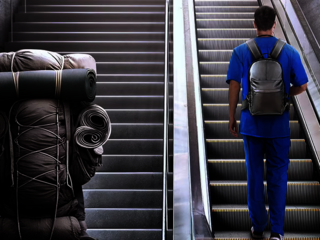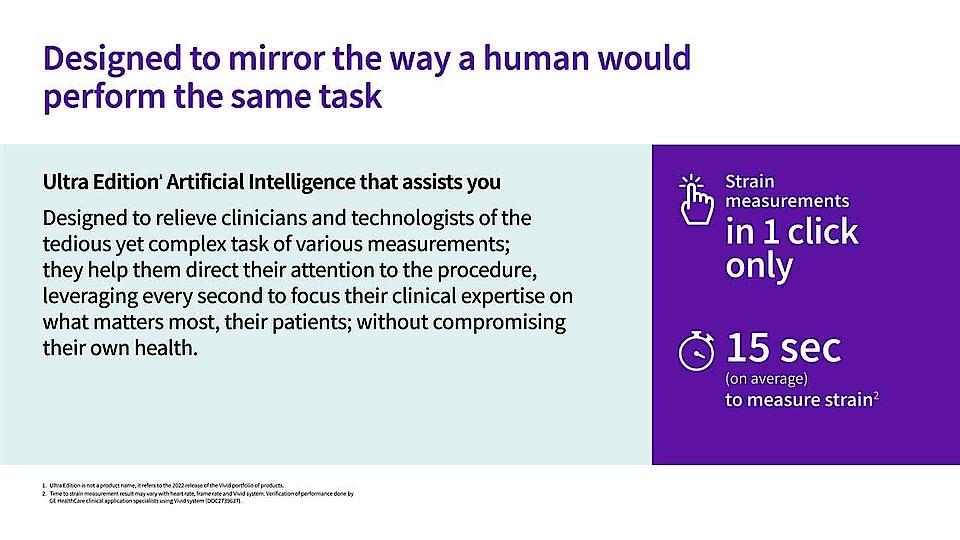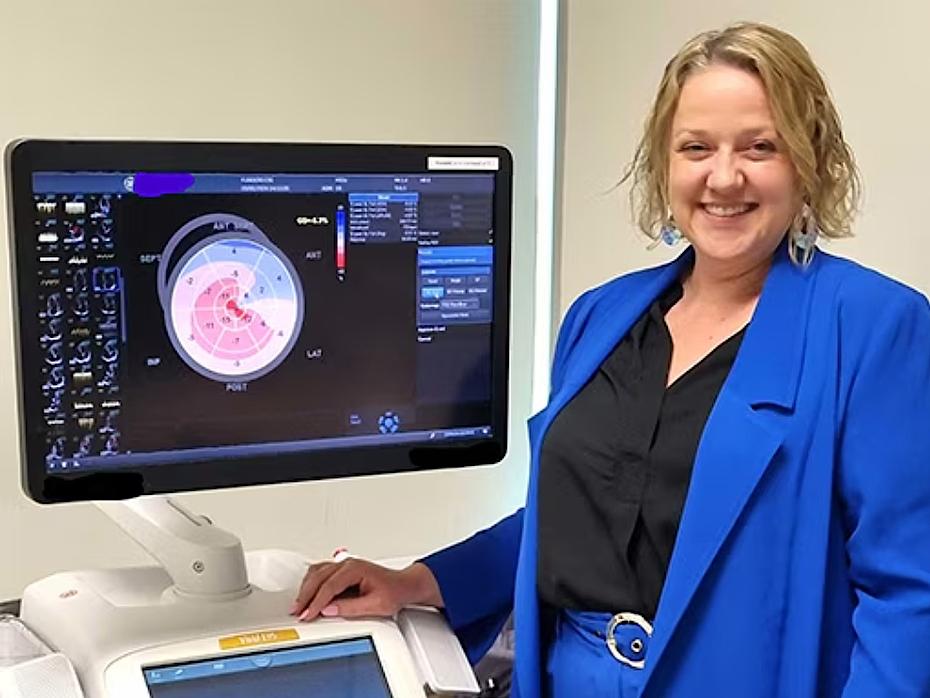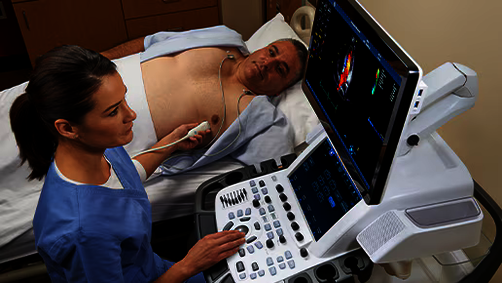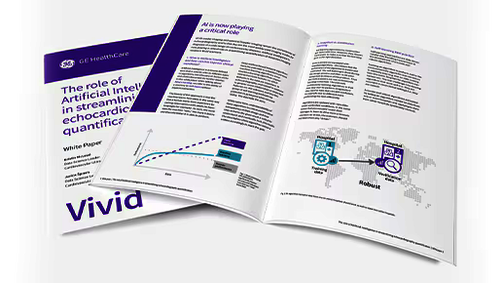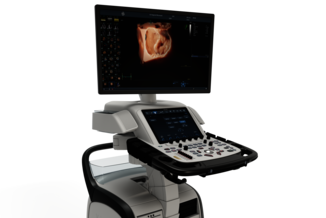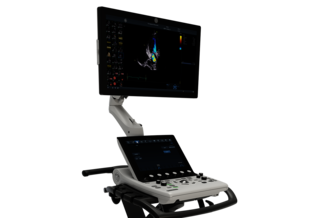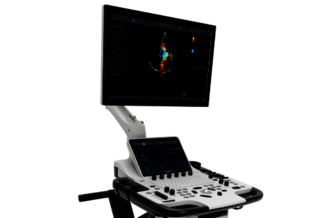At a glance
1-click AI support
Easy AutoEF provides fast biplane, left ventricular EF results.1
Faster results
Easy AFI LV yields simple and fast EF & strain results (15 seconds on average).2
Consistent measurements
AI Auto Measure 2D achieves 98% detectability3 and 100% reproducibility.4
Extreme productivity
Our latest AI-based technologies can help improve workflow efficiency.
As the demand for echocardiograms increases, repetitive tasks and staff shortages are creating physical challenges.
Cardiologists and sonographers often spend valuable time on repetitive tasks like adjusting parameters and repeating tests with multiple button clicks to obtain the same measurements. Combined with staff shortages and increased sonography referrals that may result in insufficient rest, cardiologists and sonographers are increasingly exposed to physical risk.
of the US population is projected to have some form of Cardiovascular Disease (CVD) by 2030.⁵
of clinical sonographers experienced symptoms of WRMSDs (Work Related Musculoskeletal Disorders).⁶
billion yearly in direct and indirect costs for employers, due to restricted or lost work time from WRMSDs.⁵
Advancing Technology in Healthcare Solutions
Echocardiography Lab Director, Dr. Jordan Strom, sees the latest advancements in technology as a possible answer to some of today's biggest challenges.7
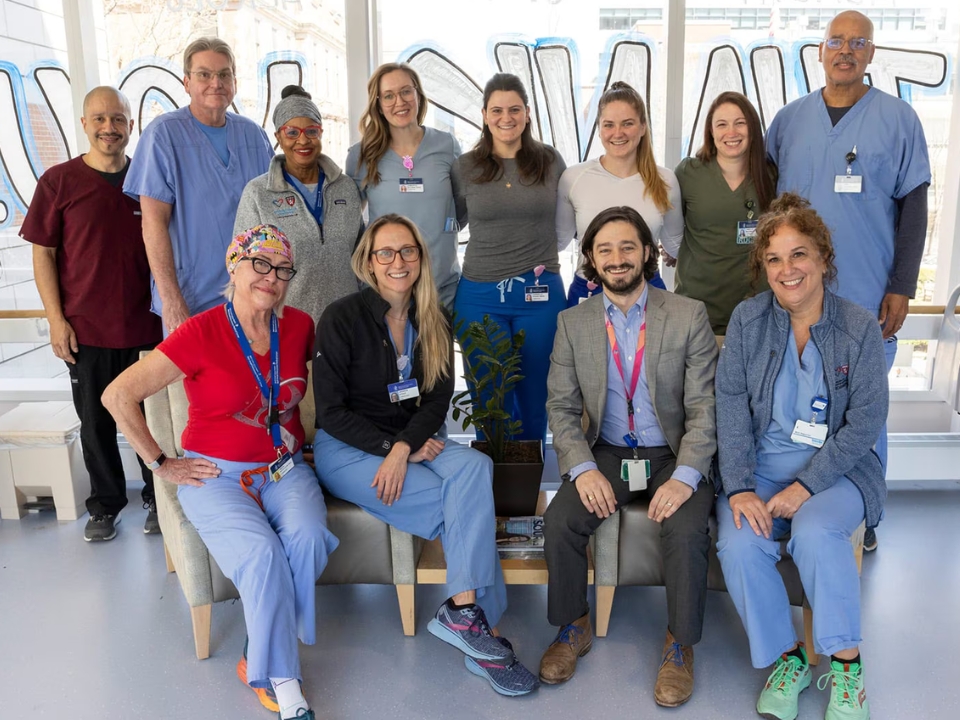
Key features
Vivid Ultra Edition* brings AI capabilities to the entire portfolio so every institution can benefit from these virtual assistants to save time & decrease intra- and inter-operator variability.
Easy AFI LV
Only one click. Our AI-based auto ROI detection algorithm allows users to complete the AFI workflow with minimal manual interaction to save time and decrease intra- and inter-observer variability. EF and strain results in 15 seconds (on average).2


Easy AutoEF
Biplane, left ventricular ejection fraction results in just one click. Our AI-based auto ROI detection algorithm saves time and decreases intra-and inter-observer variability. Also, if no ECG signal is present, minimal additional user interaction is required.1
AI and automation insights
Discover how AI and automation optimize workflows and help improve efficiencies.

"With AI, we’re improving the reliability and reproducibility of our measurements. We’re improving access to care and access to ultrasound, and ultimately streamlining what we do.⁷"
Disclaimer
* Ultra Edition is not a product name, it refers to the 2022 release of the Vivid portfolio. All features or products may not be available in all markets, please contact your sales representative for more information.
References
- Easy AutoEF is restricted for use with adult TTE on GE HealthCare raw B-mode data loops of the LV. Easy AutoEF does not support left ventricles with septal bulge.
- Time to strain measurement results may vary with heart rate, frame rate and Vivid system. Verification of performance done by GE HealthCare clinical application specialists using the Vivid system (DOC2739637).
- Applicable to the AI-based View Recognition algorithm, results based on GE HealthCare internal data (DOC2292732).
- Applicable to AI Auto Measure – Spectrum Recognition, results based on GE HealthCare internal data (DOC2292732).
- Work Related Musculoskeletal Disorders In Sonography, SOCIETY OF DIAGNOSTIC MEDICAL SONOGRAPHY, Susan Murphey, journals.sagepub.com/doi/full/10.1177/8756479317726767
- Forecasting the Future of Cardiovascular Disease in the United State, AHA Policy Statement, 2011. Source: CIR.0b013e31820a55f5.
- Dr. Strom is a paid consultant for GE HealthCare and was compensated for participation in this article. The statements described here are based on his own opinions and on results that were achieved in his unique setting. Since there is no “typical” hospital and many variables exist, i.e. hospital size, case mix, etc., there can be no guarantee that other customers will achieve the same result.
- The statements by Dr. Perry described here are based on her own opinions and on results that were achieved in her unique setting. Since there is no “typical” hospital/clinical setting and many variables exist, i.e., hospital size, case mix, staff expertise, etc. there can be no guarantee that others will achieve the same results.
